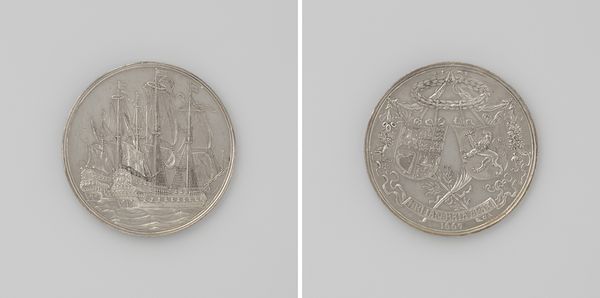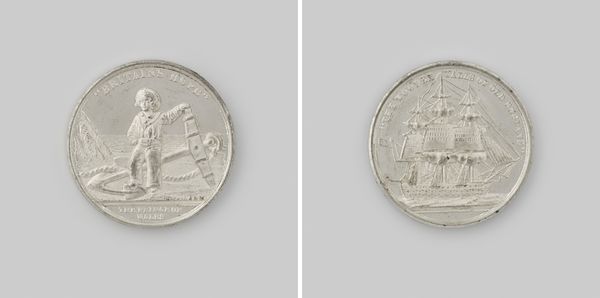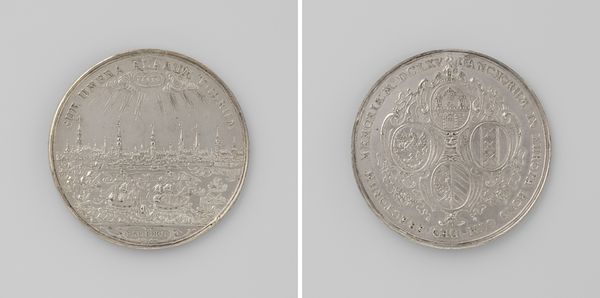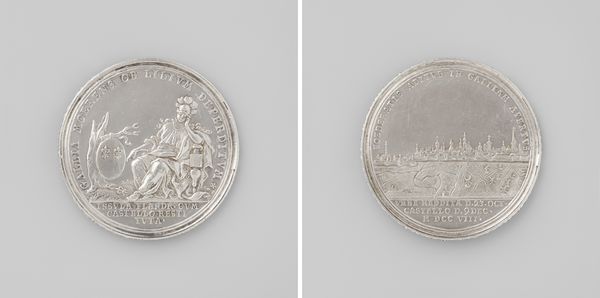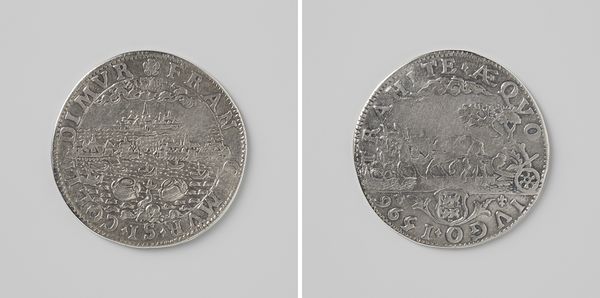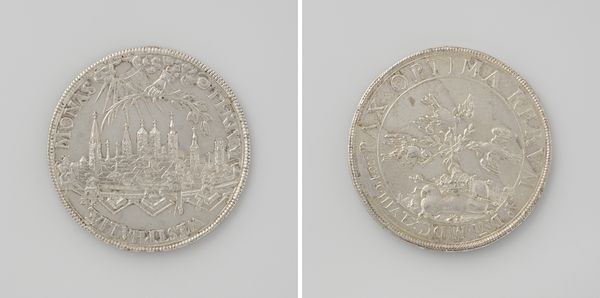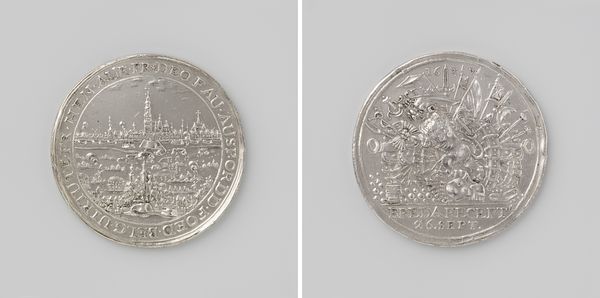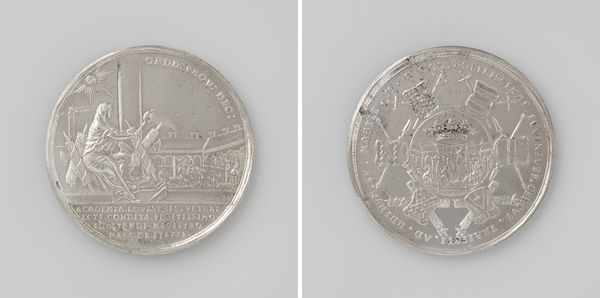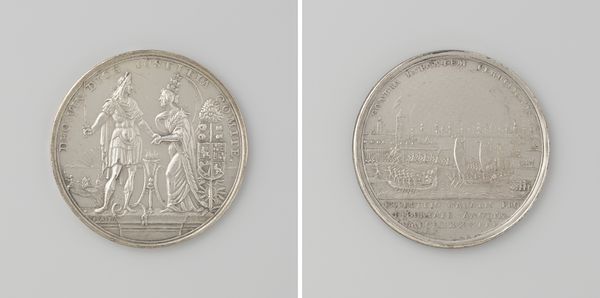
metal, engraving
#
baroque
#
metal
#
landscape
#
ceramic
#
cityscape
#
history-painting
#
engraving
Dimensions: diameter 4.7 cm, weight 343 gr
Copyright: Rijks Museum: Open Domain
Curator: This object is a fascinating engraving made from metal. It is called “Doortocht van admiraal van Wassenaar Obdam door de Sont,” which translates to "Admiral van Wassenaar Obdam's Passage through the Sound," created in 1658 by Johann Hohn. Editor: My first impression is the incredible detail! It's impressive to see so much rendered in such a small circular space. Curator: Exactly! The method and skill involved in creating this are paramount. Think about the labor involved in crafting this from metal. Its tactile qualities, combined with its durability as a metal engraving, speak to its function as both art object and record-keeping of Dutch history. Editor: That’s interesting, but context is everything, isn't it? This piece seems deeply tied to the socio-political climate of the 17th century. Engravings like this would have been circulated to commemorate significant naval victories and showcase Dutch power during the Anglo-Dutch Wars. It's a form of public image management. Curator: Absolutely. The distribution methods matter! How this kind of item reinforced social hierarchies through depictions of military leaders like van Wassenaar Obdam, who undoubtedly influenced trading power between states, says a lot. What about how the metal engraving circulated within society? Was this to celebrate Dutch power among its people? Who had access to art like this, and how did consumption patterns drive creative innovations within the baroque era? Editor: It also reveals a particular perspective on the events it portrays. While it might appear to be a simple depiction of ships sailing, consider who commissioned this artwork and the story it's meant to convey. What’s omitted or emphasized? The heroic representation of naval passage smooths the reality, and probably violence, of 17th-century naval dominance. It tells us as much about how the Dutch wanted to see themselves as it does about the event itself. Curator: Precisely. This piece is more than the battle it's immortalizing. What about its material properties? Or labor origins? By understanding art through the circumstances of its material construction, we begin to recognize art as culturally valuable as a record and symbol, no? Editor: Yes, and by dissecting the historical circumstances that molded its reception and intended audience, we recognize its role as propaganda and self-mythologization in its time, expanding its symbolic potential for our understanding today. Curator: Indeed! I find myself looking again at its textural detail, marveling again at how its materiality intertwines with meaning. Editor: And I appreciate the deeper understanding of the layers of societal influence surrounding the art—the push and pull of what history it tells us, and what it hides.
Comments
No comments
Be the first to comment and join the conversation on the ultimate creative platform.
